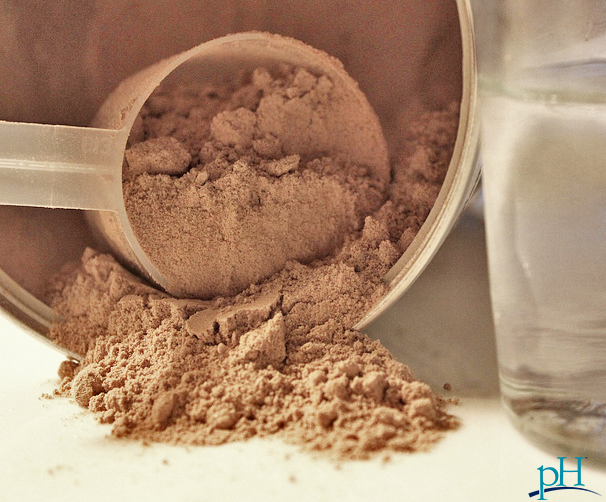Are all protein powders created equal?
11 years ago | Nutrition
By pH health care professionals
Protein powders have become the go-to meal replacement option. According to Euromonitor International, 2013 sales of protein powders were at least $7 billion for sports nutrition powders as well as weight management protein shakes. Conditioned by years of meat-industry proclamations of protein being good for building muscle, yet stymied by the dangers of animal fat in the diet, consumers are turning to powders to get the protein they feel they need. But, potential dangers lurk in certain protein powder supplements.
Beware of the following when buying a protein powder:
- Contaminants: Consumer Reports bought 15 protein powders in 2010 and examined them for contaminants. Brands like EAS Myoplex and Muscle Milk had high levels of contaminants including arsenic and cadmium, which can cause kidney damage. Nearly all powders had some kind of contamination, from lead to mercury, although most of the others had predicted levels below the “dangerous” level when the suggested serving size would be consumed. The powders with no detected contaminants at all were Six Star French vanilla whey protein and Solgar natural vanilla whey protein. The Optimum Nutrition brand’s chocolate powder had some contaminants, but their “Velocity Vanilla” product tested with flying colors. In general, brands sold at major natural-foods chains, as opposed to sports nutrition stores, may tend to be more pure overall due to higher scrutiny.
- Allergies: Protein powders might be made of soy, whey, egg, rice, pea or hemp protein. Caution must be taken to avoid allergens; read labels closely! Some niche brands even produce animal protein powders made from beef, but this is harder to find.
- Sugars and artificial colors: Artificial colors and flavorings are toxins that create unnecessary work for the liver. Corn syrups and added sugars (anything that ends in –ose) cause blood sugar to spike, creating metabolic dysregulation and difficulty in losing fat. Plenty of powder options exist that are made with stevia or no sweetener at all.
Once a pure protein product is chosen, it’s important to use it judiciously. The average person is not working out anywhere near hard enough to require supplementary protein. According to a 2009 paper by the American College of Sports Medicine and the American Dietetic Association, daily protein needs for endurance and strength-trained athletes are 60 grams for a 120-pound person and 75 grams for a 150-pound person. Since a typical protein powder contained 23 grams per serving, most powder-guzzling athletes are way over quota when you factor in all the eggs, burgers, beans and dairy they also consume. A vegan power weightlifter would be a much different story.
However, if you want a quick after-workout snack, a half-serving of protein powder with a real meal for lunch or dinner is a filling option.
With so many options, it can be hard to research, compare and ultimately choose a protein powder. At Proactive Health, our health professionals have already done the research for you and can recommend the best, non-toxic protein powder for you, to help you achieve your health and fitness goals.
Enjoy Your Healthy Life!
The pH professional health care team includes recognized experts from a variety of health care and related disciplines, including physicians, attorneys, nutritionists, nurses and certified fitness instructors. This team also includes the members of the pH Medical Advisory Board, which constantly monitors all pH programs, products and services. To learn more about the pH Medical Advisory Board, click here.







